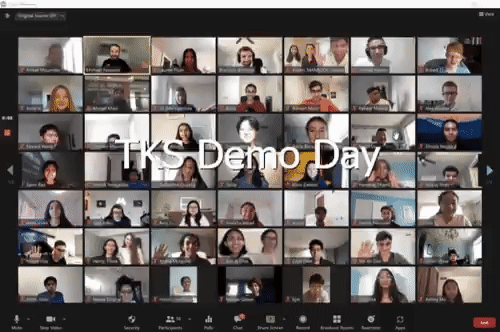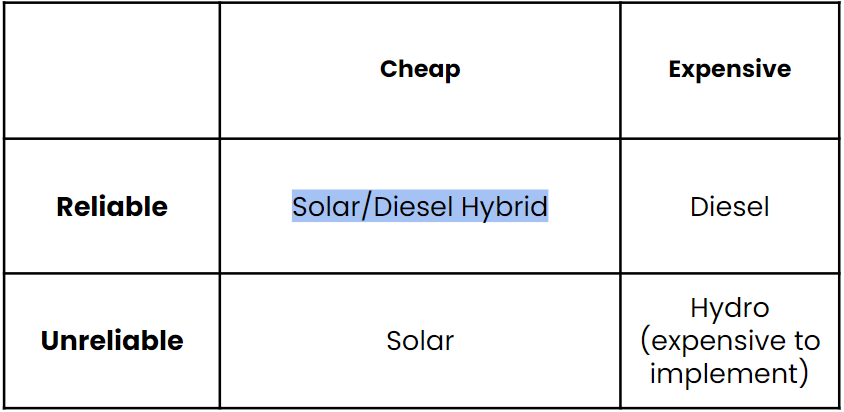Sprinting in the Rain | Ahnaaf's April W3+4 Update
I'm not sad and running into the sunset like a TV drama, there's just a massive storm in my area during a heavy workweek...
Welcome to my April W3+4 Update
I switched newsletter providers again, sorry. Revue is nice and pretty but when all of your newsletters get thrown into spam, there’s gotta be a change. I hope this is the last time I’m making a switch. It’s honestly getting annoying.
That being said, I like Substack a lot more than Revue → it’s just so much cleaner. Later in the update, you’ll see that I want to be a better storyteller, Substack fits better with that goal than Revue.
Hopefully, you like these newsletters better.
To the content!
If you're new to my weekly update, welcome!
I'm a 16 y/o web2 + web3 + neurotech developer currently trying to build the future of neurotech R&D funding with NeuraDAO + Bring electricity to 10,000 Liberians.
Sprinting in the Rain
I promise that there’s a reason as to why I’m packing two weeks into one. These past two weeks were super hectic (I’ll explain what that means below).
This coming week should be a lot more relaxed, hopefully, I can get a lot of deep focus work in, instead of frantically trying to get everything done.
Rundown of the third + fourth week of April:
Final sprint for Electrify Liberia (for now)
TKS Activate Demo Day (Twitter thread coming soon)
Massive storm in Ontario knocking our power out
Becoming a better storyteller.
The Final Countdown
This week was the final week of the Earthshot challenge in TKS Activate (a challenge to solve some of the world’s biggest problems, run by The Knowledge Society) which meant that this entire week would be dedicated to finishing up our solution, and creating content + a presentation.
That’s not an issue, I’ve done sprints like that in the past. The issue was the level of specificity needed in each slide to convince the audience that this could be a real thing.
The point of this project is to implement it in the real world. However, that’s super hard to do, as if you want things to go well, you have to plan with a level of specificity which would satisfy the chaos of the world.
Before I go deeper, here’s a quick briefing on Electrify Liberia
What is Electrify Liberia?
To catch you up on what we (Raina, Sanvi and I) were building, I’m just going to quickly summarize our problem, solution, and the various gaps that we have.
I’m planning on writing a longer Tweetstorm about the journey, what we learned, as well as what it is soon.
Our Problem
Due to unreliable and inefficient power generation, loss of electricity in transmission, and power theft, the cost of electricity in Liberia is prohibitively expensive (sometimes up to USD 3.96/kWh, normally people in the US pay around $0.21/kWh).
As a result, Liberia has some of the lowest electricity access rates globally, as most of its population is ravaged by the effects of a long civil war in their country which spread poverty, and unemployment.
This issue frustrated us, as electricity is such a no-brainer for boosting economic growth, and improving the quality of life. Our question was how can we get them electricity, as cheap and reliable as possible.
Our Solution
In our research, we found that the highest impact metrics were the initial investment, as well as cost/kWh for Liberian electricity users.
Diesel is the family favourite in Liberia. When understanding the pros/cons it looks like this:
High cost/kWh
Reliable
Low Initial Investment
Solar is the underdog where more people are on the rise to implement Solar, however, it’s too expensive at first. When understanding the pros/cons it looks like this:
Low cost/kWh
Not always reliable (cloudy day, night)
High Initial Investment
With that logic, we thought the solution was clear. Take the best parts of Solar and Diesel, and smash ‘em together.
When that happens, you get a reliable, cheap, financially accessible source of electricity for millions of Liberians.
Therefore, our solution was to create Solar-Diesel Minigrids in Liberia to bring electricity to 10,000 Liberians.
Back to the story…
It’s presentation day, and I’m feeling pretty relaxed. Not because I think I have a great presentation, but because after this, I can focus on fixing the gaps in our solution rather than on the presentation.
The presentation went well, we didn’t win but I’m happy with what we presented. There’s still a long way to go, but there’s potential here. There’s potential to do something great with this team, and that’s what got me so excited to build this project in the first place.
During the presentation, there was a massive storm outside which knocked out power for a bunch of cities including my own. It was hilarious as we started to really feel what it was like not to have electricity until it came back on 10 minutes later.
I was reminded of: why this problem matters to 600 million Africans, and of my tremendous privilege in North America, all in a couple of minutes.
In the end, we’re planning to continue with the project. I don’t expect it to die any time soon.
TKS Activate Demo Day
Here it is, the last event of TKS Activate. Demo Day is a final day where Activates (The Knowledge Society’s 2nd-year students) would present what they’ve been working on throughout the year.
Each project was super impressive, and all the guests were impressed by what the Activates were working on. All of the projects were focused on solving some large problem in the world, and doing it in a way that made sense economically (not making any charities).
Some highlights of the event were seeing Zayn’s AR literacy demo (built by Nic), talking with Jeff Siaw about reliable electricity in Ghana, and Raj Jhaveri about potentially selling Carbon Credits to make our product sustainable with Electrify Liberia.
If you want to see more, check out this Twitter thread where we all celebrate each other’s hard work and dedication.


Becoming a Better Storyteller
This past weekend I went to 3 weddings. That means 3 rounds of speeches, dances, and food. Generally, the dances and food were alright, what mainly caught my attention were the speeches.
They all tended to be stories of the bride/groom and how they impacted the storyteller’s life. However, each of the stories were told so poorly. While the speaker was pouring their heart out, nobody was paying attention! Everyone was taking pictures, eyeing the waitress, or getting drinks.
No diss to any of the people speaking, they did their best, and storytelling is a hard skill to master. Stories can be joyful, sad, funny, or insightful, and it’s up to the storyteller to really evoke these emotions. When a great storyteller speaks, people listen.
After that wedding, I realized that I really wanted to be a better storyteller. The idea of enrapturing an entire room of people with my stories sounded fun to me. It didn’t have to be just verbal stories, written stories are interesting to tell as well. Now, I just got to put the work in and actually do it.
I have a feeling that’s what these newsletters are going to be. A collection of updates, stories, ideas, questions and reflections from me on a weekly basis.
Here’s the first question from me: Have you watched “3 Idiots,” yet? I suggest that you do.
What's Next?
It’s the first week of June soon! It’s finally warming up but I hate these mosquitoes. Maybe I’ll drop my current projects to go figure out how to rid the world of mosquitoes (that’s a joke).
I do plan on watching some cool movies, reading up on how to write, and tell stories better, as well as teach one of my neighbours how to code.
Here’s what I’m going to do next week:
Rebrand Electrify Liberia (the current brand is so bad, I’ll fix it guys)
Hire a Community Manager for NeuraDAO (our community is so dead, let’s get someone to fix it guys)
Teach my neighbour how to code.1
I absolutely forgot that I had to do this until I wrote this. I need to prepare for the lesson… Sh*t.


